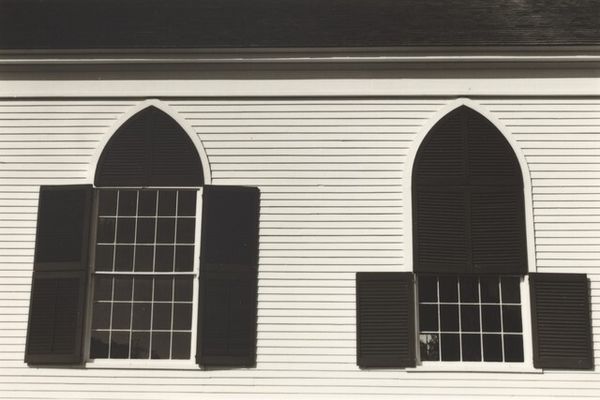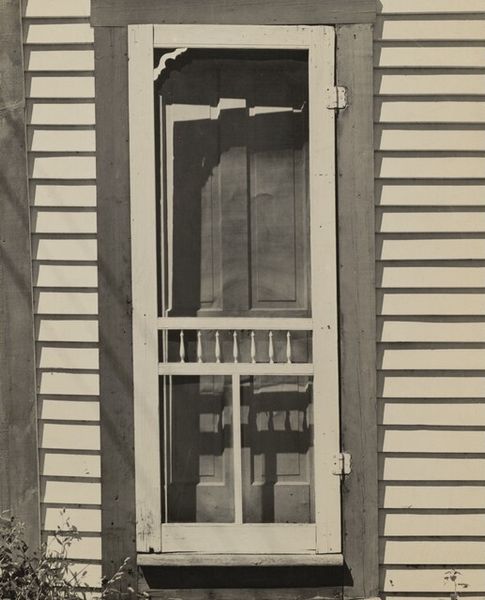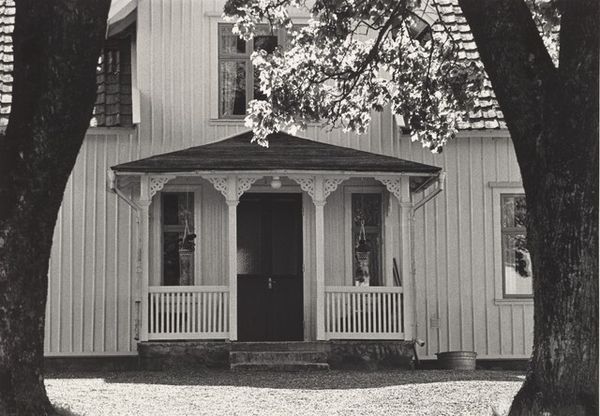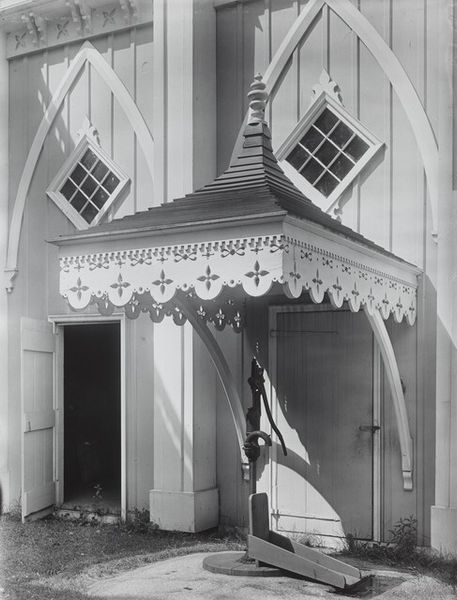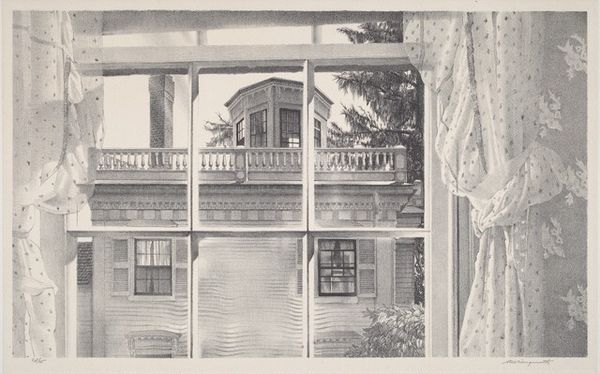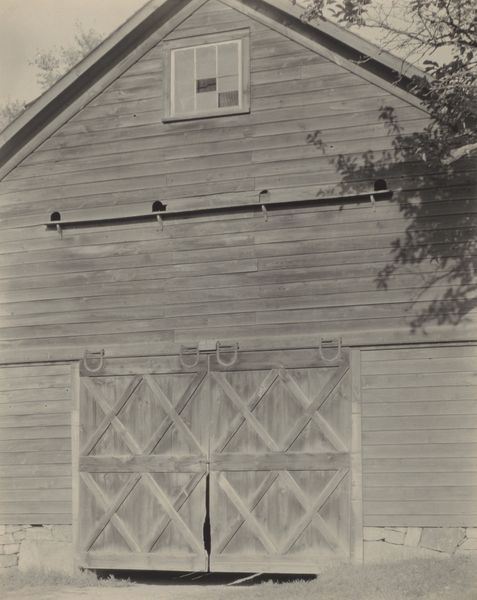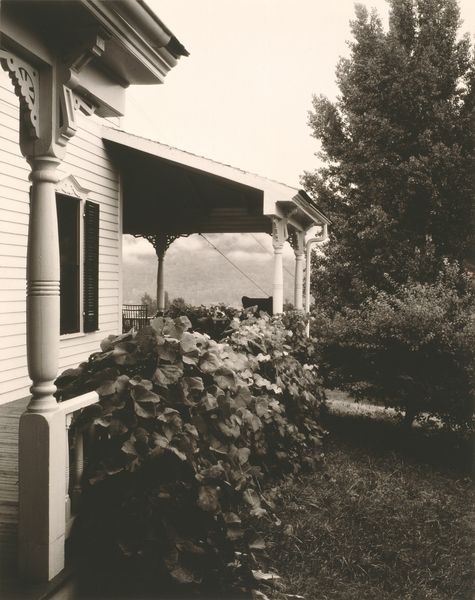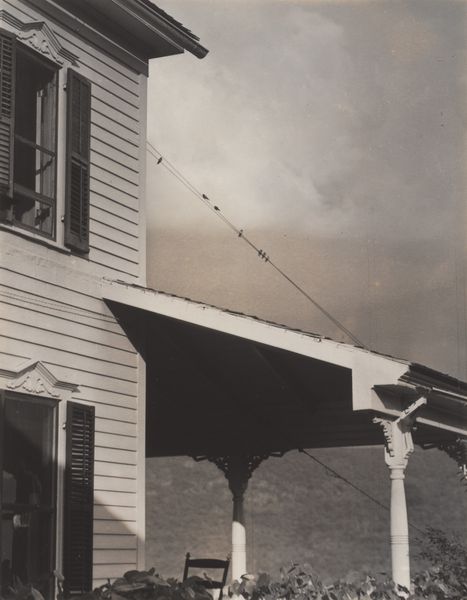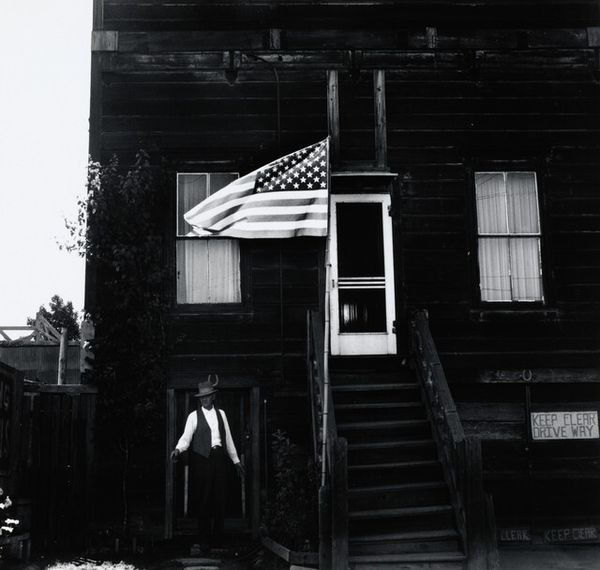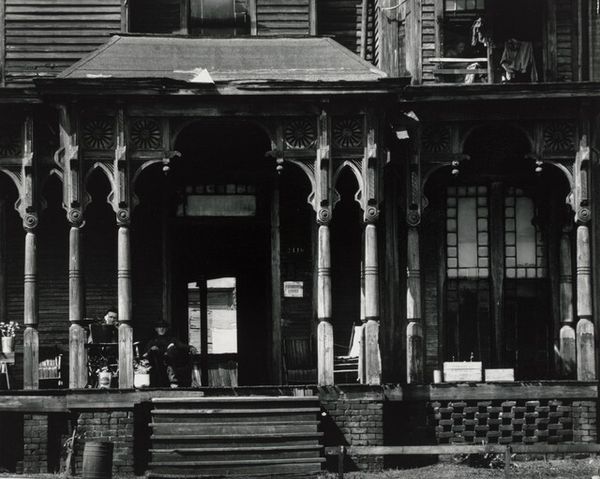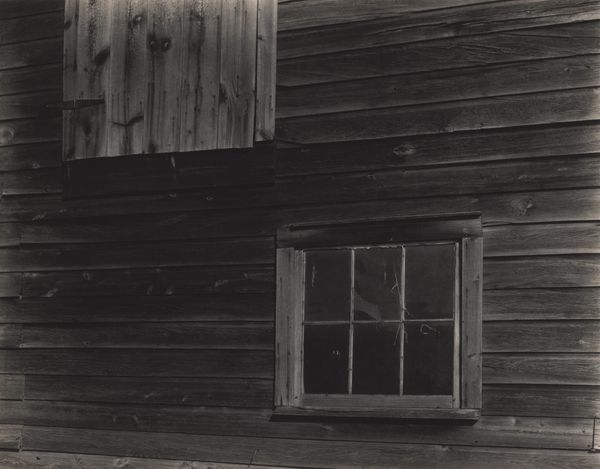
photography, gelatin-silver-print, architecture
#
black and white photography
#
black and white format
#
historic architecture
#
photography
#
geometric
#
gelatin-silver-print
#
monochrome photography
#
ashcan-school
#
cityscape
#
modernism
#
architecture
#
realism
#
historical building
Dimensions: image: 25.2 × 33.5 cm (9 15/16 × 13 3/16 in.) sheet: 27.9 × 35.3 cm (11 × 13 7/8 in.)
Copyright: National Gallery of Art: CC0 1.0
Curator: Here we have Aaron Siskind’s “Tabernacle City 3,” a gelatin-silver print created around 1935. Siskind was deeply involved with the Photo League, and this work resonates with that spirit of social document and artistic expression. Editor: It's strangely soothing. The sharp lines of the architecture softened by that dreamy, almost glowing, white curtain behind the windows. The repetition of form makes me feel calm. Curator: Absolutely, but I think it goes beyond just surface aesthetics. Siskind’s involvement with the Ashcan School is crucial here. These photographers sought to capture everyday life, especially the lives of working-class people. The architecture here reflects a certain time, possibly a space of sanctuary but certainly one rooted in class dynamics. Editor: I see what you mean. The shutters feel very “every home should have this”. What seems soothing could be seen as static or restricted. Curator: Precisely. And think about the “city” in the title, there is more architecture than organic structures in this capture of the cityscape. These geometric shapes represent social systems, especially when seen in light of Modernism where form follows function. It prompts us to reflect on who builds these systems, and for whom? Editor: Yeah, the architecture feels… assertive. Maybe not intentionally, but those straight lines have a certain force, especially contrasted with the light filtering through the curtains inside. There is an implied privacy, something sacred implied. Curator: Which gets back to the title "Tabernacle City 3," drawing connections between domesticity, sacred space, and civic architecture. Siskind urges us to critically examine these interlinked societal pillars and who may or may not benefit from them. Editor: For me it’s more about that tension, the dialogue between light and shadow, rigid lines and the organic chaos behind those curtains. But I think we are both responding to how such a simple-seeming photograph speaks to so much more when you really begin to explore it. Curator: A critical examination of these often-overlooked elements is more crucial than ever. Siskind’s photographs make a powerful statement. Editor: Yes, what at first seems like a soothing and attractive photo transforms into a stark commentary on both our personal space and collective well being.
Comments
No comments
Be the first to comment and join the conversation on the ultimate creative platform.
